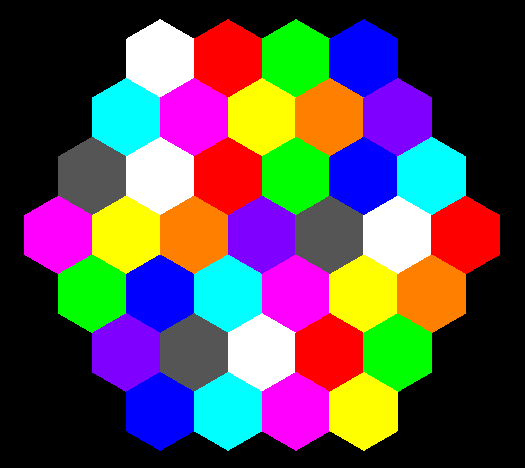
Below are a few useful formulae relating to regular hexagonal arrays. Such arrays can be characterised by edge length N, and the total number of hexagonal cells in such an array is given by the Nth centred hexagonal number:
NC(N)= 3N(N-1)+1
The first 15 numbers in the series are:
NC(N) = 1 7 19 37 61 91 127 169 217 271 331 397 469 547 631.
E.g. the array pictured below has edge length N = 4, number of cells NC = 37.

Hexagonal tiling allows a surface to be divided into equal areas with the least total perimeter, and can be found in e.g. beehives, graphene, layers of foam and the segmented primary mirrors of large telescopes.
Width and height of the array
If the diameter of an individual hexagon,
between parallel sides, is B, the width of the array (oriented as above,
with the centres of adjacent hexagons in parallel rows) is:
W = (2N - 1)B
and the height of the array is:
H = (3N-1) x B/sqrt(3)
so the width/height ratio is:
W/H = (2N-1)/(3N-1) x √3
For N = 1, 2, 3, 4, 5, W/H = 0.866, 1.039, 1.083, 1.102, 1.13. As N tends to infinity, W/H tends to 1.155, which happens to be identical to 1/(W/H(1)).
(NB some graphical devices may change slightly the aspect ratio of a displayed image.)
Hexagonal arrays of circles
A hexagonal array is the densest way of arranging circles on a plane
(e.g. when deploying optical fibres in a telescope
focal plane).
For a hexagonal array of circles with diameter A, and separation
of centres B:
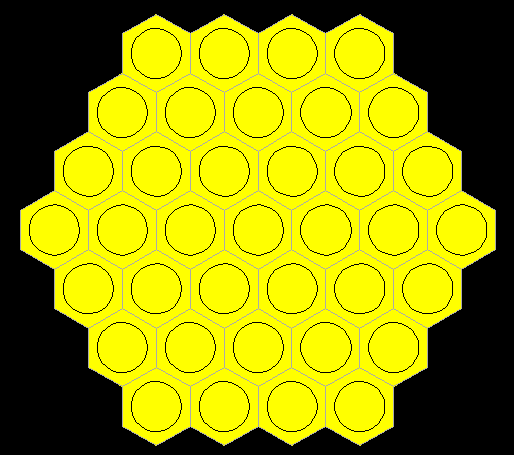
the filling factor F = area of circular apertures divided by area of hexagons is: F = (A/B)2 π/2/√3.
If A = B (i.e. inscribed circles), F is approximately 0.91.
Example hexagonal arrays
N = 1:
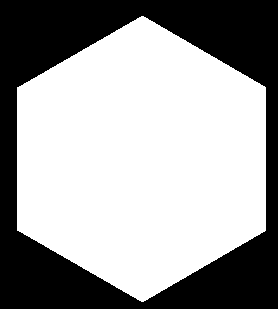
N = 2:

N = 3 (N = 4 is shown at the top of the page):
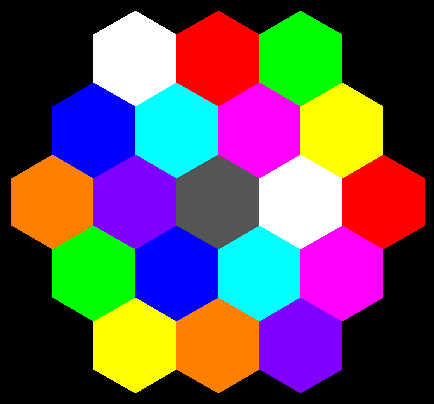
N = 5:
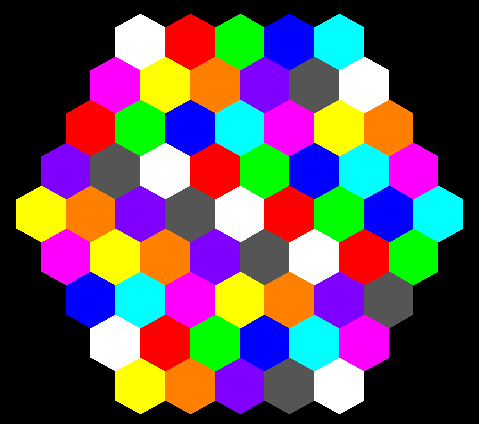
N = 14:
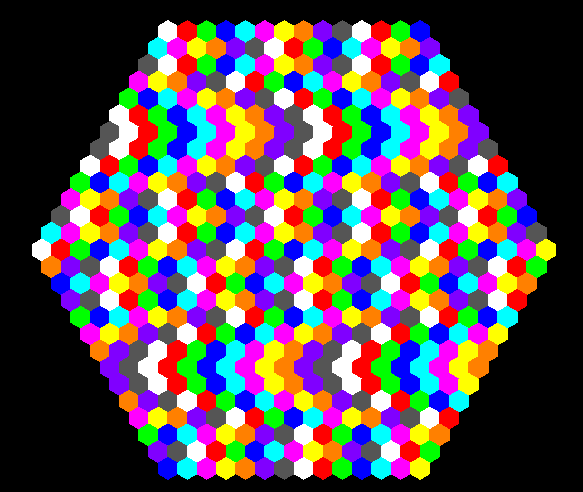
N = 1925:
For an array with edge length N = 1925, the total number of hexagonal
cells (not displayed) is NC = 11111101. Not many people know this.